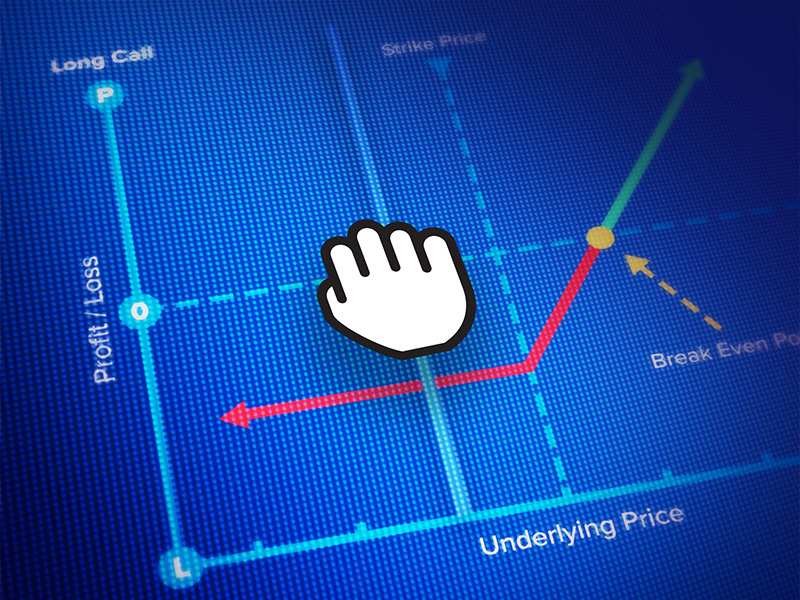By: James Gudger, CFA, CAIA and Harin de Silva, CFA, Ph.D.
James Gudger, CFA, CAIA, product specialist for the Systematic Edge team at Allspring, is joined by Harin de Silva, co-head of Systematic Research, as he discusses his observations of the markets year to date and the importance of sectors in the pursuit of building a defensive portfolio.
Click here to listen to podcast
Harin de Silva: I would say it’s been a good year for the most speculative areas of the market. But it really hasn’t been the case that the rising market has lifted all stocks. When you’re making an investment decision, you’re not investing for a few weeks or a few months. You’re investing for years or decades.
James Gudger: That is Harin de Silva, and I am James Gudger, product specialist for the Systematic Edge team, and you are listening to On the Trading Desk®. I think we can all appreciate a breath of relief that 2022 is behind us in what proved to be a challenging year for virtually all asset classes. Today, Harin and I will continue our theme of discussing defensive strategies and how our team is thinking about finding opportunities in these times of elevated volatility. Thanks for being here, Harin.
Harin: Nice to be here, James. Thank you for having me.
James: Many investors are hopeful that the worst days are behind us. What can you tell us about how the markets have been behaving year to date?
Harin: It’s been pretty much a blockbuster year for certain sectors of the market. High-beta stocks, stocks with challenged valuations, have done incredibly well. So, I would say it’s been a good year for the most speculative areas of the market, but it really hasn’t been the case that the rising market has lifted all stocks.
James: Now that seems like a very different sentiment from what we saw last year. Do you think this could indicate that the correction we’ve been going through is now over?
Harin: It’s pretty hard to predict that. My observation is that what is commonly referred to as a relief rally sometimes is actually quite common. If you look at the last big unwinding, which was the dot-com bubble in the 2000s, there was several distinct short-term rallies in that time period when the Nasdaq popped up a lot and everybody thought it was over. So, when you’re making an investment decision, you’re not investing for a few weeks or a few months. You’re investing for years or decades. So, I think this sort of blip you should realize is pretty common and it’s not really prudent to be changing your investment strategy based on what happened over a six-week time period in a narrow sector of the market.
James: So, what else are you seeing right now that could suggest that we’re not quite out of the woods yet?
Harin: I think the reality is that the real yield and bonds is really negative. I think there’s a lot of focus, especially in the U.S. on the Fed (Federal Reserve). And there doesn’t seem to be much recognition of the fact that the inflation we’re seeing now is really a global phenomenon, right? It’s driven by energy prices. It’s driven by some of the supply chain challenges. It’s driven by deglobalization. So, these are things that are affecting every country in the world. So, countries in Europe and countries in Asia are seeing huge inflation and a lack of understanding around that. I got a chuckle from the CPI (Consumer Price Index) numbers where they showed that the price of men’s underwear went up by 5%. Now, Alan Greenspan was renowned for following both the supply and demand for underwear because he thought this was a really good indicator of what was going on in the stock market. And the fact that the price went up by 5% tells you that inflationary pressures have not gone away yet. And this is something we need to be thinking about dealing with for the next year or so.
James: Given that sort of macroeconomic backdrop, what is your team focused on right now as you attempt to navigate this uncertain environment?
Harin: Well, we’re really wrestling with the idea of how to maintain our defensive posture. Our goal is to always have an attractively priced defensive component in our portfolio. And the traditional low-risk hedges, things like overweighting utilities and overweighting consumer staples, those are pretty expensive ways to incorporate hedging into a portfolio. So, what we’ve noticed is that energy, for example, the beta of energy has come down really dramatically. So, an overweight in that allows you to reduce the volatility of the portfolio and reduce the systematic risk in the portfolio—same with some of the defense companies where the beta has dramatically come down. So, what’s been really fascinating is the change in beta as we’ve seen, the change in the risk profile of stocks from a systematic perspective that we’ve seen in the last six months, and that opportunity has really presented us a way to actively manage the overall risk of the portfolio without overpaying for it because the traditional places that people go to build a defensive portfolio—putting more money in utilities, putting more money in health care, putting more money in consumer staples—those hedges are really, really expensive.
James: So, it sounds like the traditional sectors and industries where you want to run to for safety in times of this elevated volatility are changing. What more can you tell us about what you’ve seen move around recently?
Harin: Well, the big movements have been in energy. I mean, energy, the risk of energy has come down dramatically because people increasingly see it as almost a staple. It’s something we can’t do without. It’s lost a lot of the brown premium that was attached to it a few years ago. I think other sectors like information technology and consumer discretionary, the betas of these sectors have risen by a huge amount. So, underweighting them or maintaining a short position in them is a very good thing to do. I mean, you can’t have missed the fact that on down days now, the tech sector tends to fall by a lot more than it did two years ago, right? Two years ago, we used to joke that the Apple iPhone was a consumer staple. You wouldn’t think that now, given the behavior of some of the sectors.
James: You mentioned the changes in the risk profile of the energy sector. How might the recent crisis in Ukraine be affecting that?
Harin: Well, the crisis in Ukraine actually is having a huge impact on the energy sector because it’s dramatically affected the supply of gas, as well as oil that we’ve relied on from Russia. And it’s also created some supply challenges. So that’s been one of the drivers. Now you would think the beta would go up, but the beta has actually come down because you realize, at least the world’s realized, that we actually can’t do without energy or this type of energy for a few years until maybe we find better substitutes.
James: Very fascinating, Harin. I think the key takeaway here is the importance of sectors and the pursuit of a defensive tilt in your portfolio. But with the time we have left, do you have a parting thought for our listeners?
Harin: Yeah, I tell people to think a little bit more about what’s causing inflation and also the two other major risks that are facing us. You can’t lose sight of the fact that we have a major land war going on in Europe. We’ve basically lost what George Bush and Margaret Thatcher referred to as the peace dividend, which caused that amazing growth spurt the U.S. experienced in the 80s and 90s. That’s gone away. We’re spending a fortune now on shells and defensive elements. And this is actually going to come out of each of our economies worldwide. That’s a big impact. The second thing I think everyone needs to think about is the deglobalization that’s going on. I mean, countries are becoming very insular in their policies. It’s causing supply chain issues. When you think about the joke I made earlier about underwear, the reason underwear has gotten so cheap is the cotton is grown in China or India, it’s shipped to Vietnam where it’s assembled, and then it’s put on a boat to the U.S. Well, that chain now has a host of challenges associated because of tariffs and the fact that companies don’t want such complex supply chains. And they’re going to pay for that by having higher prices. So, both those things are things that should cause you to be more reflective about the outlook and realize that the challenge we’re seeing in the markets today from a valuation perspective are not purely caused by inflation. I think as you build a portfolio and you want a resilient portfolio, you should be thinking about these other risks and asking yourself, what do I have in my portfolio that’s going to do well if these other risks materialize?
James: Thank you, Harin. I hope that our listeners can glean some valuable insight as they consider their own exposures going forward. Thanks again, Harin.
Harin: Awesome.
Announcer: Visit allspringglobal.com to receive more market insights and investment perspectives from Allspring Global Investments. To hear the latest from our thought leaders on the ever-changing investment landscape, you can subscribe to the program on Apple Podcasts, Spotify, or wherever you get your podcasts. Thank you for listening and joining us on the road to investing elevated.
—
Originally Posted February 28, 2023 – Sector Surprises: Managing Risk During Instability
Disclosure: Interactive Brokers Third Party
Information posted on IBKR Campus that is provided by third-parties does NOT constitute a recommendation that you should contract for the services of that third party. Third-party participants who contribute to IBKR Campus are independent of Interactive Brokers and Interactive Brokers does not make any representations or warranties concerning the services offered, their past or future performance, or the accuracy of the information provided by the third party. Past performance is no guarantee of future results.
This material is from Allspring Global Investments and is being posted with its permission. The views expressed in this material are solely those of the author and/or Allspring Global Investments and Interactive Brokers is not endorsing or recommending any investment or trading discussed in the material. This material is not and should not be construed as an offer to buy or sell any security. It should not be construed as research or investment advice or a recommendation to buy, sell or hold any security or commodity. This material does not and is not intended to take into account the particular financial conditions, investment objectives or requirements of individual customers. Before acting on this material, you should consider whether it is suitable for your particular circumstances and, as necessary, seek professional advice.



















Join The Conversation
For specific platform feedback and suggestions, please submit it directly to our team using these instructions.
If you have an account-specific question or concern, please reach out to Client Services.
We encourage you to look through our FAQs before posting. Your question may already be covered!